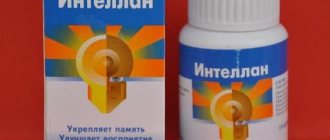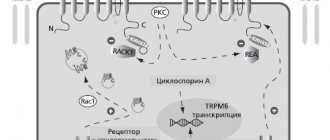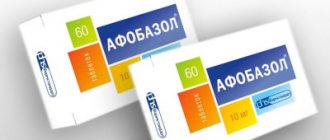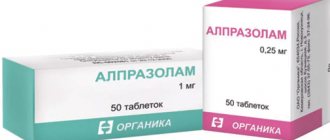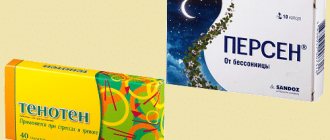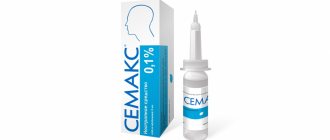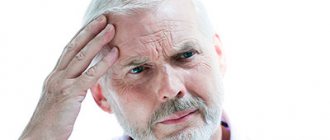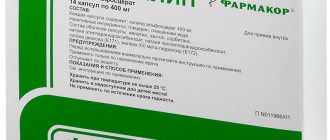The life of a modern person is filled with all sorts of stress that negatively affects the condition of the entire body. In order to give the body additional strength to fight stressful situations, viral diseases and other ailments, it is necessary to take nootropic medications.
There are many nootropics, but the most common of them is Phenotropil - this is a drug designed to stimulate the functioning of the brain, central nervous system and the entire body as a whole, as well as increase resistance in the fight against infectious and viral diseases.
Before you start taking any nootropic and Phenotropil in particular, you need to take into account many nuances, study the practical experience of doctors and reviews of people who have taken the drug.
Due to the fact that stimulating nootropics have recently gained great popularity, the specialists of our site decided to study this issue in more detail, and they began by collecting available information about the practical experience of using the drug Phenotropil.
Indications and contraindications in abstracts
Indications for use:
- decreased performance;
- weakness and general malaise;
- a condition that manifests itself as general lethargy and apathy;
- psychological and neurological diseases (anorexia, unreasonable fear, anxiety, depression, and so on).
- obesity.
Contraindications:
- allergic reaction to one of the components of the drug;
- with impaired liver and kidney function;
- in acute psychotropic conditions and after a recent panic attack.
Also, the drug should not be taken unless there is a significant need for it.
Real life stories
Several real stories-reviews collected on numerous forums about nootropic drugs that are dedicated to Phenotropil.
Story one - not the most successful experience
Writes Nikolai Vlasov, 32 years old.
I always had a negative attitude towards taking all kinds of stimulant medications, since I was firmly convinced that they could cause not only benefit, but also harm. That is why, if I felt that my body was weakening, I resorted to traditional medicine. Although, I remember, in my student years I took Glycine during sessions, but I did not feel the desired effect.
From the very beginning of the work week, a lot of monotonous work piled up and, accordingly, I did not get enough sleep. Seeing my deplorable condition, a colleague advised me to take Phenotropil, since, according to him, it encourages and stimulates the body very well.
Feeling that hot tea and fruits would not help me after work, I went and purchased this drug. To my surprise, it was relatively inexpensive, about 1000 rubles, and they gave it to me without a prescription.
Also, while I was standing in line at the pharmacy, I noticed that the nootropics you can buy are Glycine, Piracetam and many foreign analogues, the price of which is good for your wallet.
I’ve been drinking Phenotropil for about a month now and I’d like to share my observations with you:
- Firstly, I want to note that for several days there was absolutely no effect . There was no surge of strength or similar sensations; on the contrary, for the first 5 days fatigue appeared. As it turned out later, the effect of the drug is cumulative and appears after a week.
- Secondly, the effect of the drug is comparable to coffee , only it lasts all day.
- Thirdly, if your performance is fine and you do not feel constant fatigue, then you should not take this drug in order to further increase your performance.
As a result, there is certainly an effect from taking this drug, but you should take into account that you should not become heavily addicted to such medications (I read on the Internet that some people have been taking them for several years). The pharmacy itself advised me to take a course of pills and take a break for 1-2 months.
The second story - adequate, but subjective assessments
According to Anna Vangeleva, 21 years old.
I am a student at a medical university and it seems that lack of sleep has become an integral part of me, since I need to learn a huge amount of material, and fatigue constantly makes itself felt.
Before the session, I did not sleep for 2 days and, accordingly, during the classes I felt very bad, my vision darkened and I felt dizzy, the teacher took me to the nurse.
After a little questioning about what could have caused this condition, I told her that because of my studies I was constantly not getting enough sleep and not feeling well. After giving a lecture about what needs to be done to ensure that a similar situation does not happen again, the nurse advised me to take nootropic drugs for a month to increase brain activity and stimulate the body.
After the classes, I went to the pharmacy and bought Phenotropil for 800 rubles (dispensed without a prescription). I read the instructions, and I was pleased that the drug had a minimal number of side effects and contraindications (according to the instructions, the drug is not recommended for use by those who may have an allergic reaction to the components of the medication).
After a month of taking it, I want to tell you about my observations:
- The effect did not come immediately , but only after some time. This is due to the fact that the effect of the drug on the human body is revealed gradually.
- If you have an allergic reaction to the active ingredient of the drug , then there is little point in looking for analogues, since they contain the same main substance. It is better to find another way out of this situation.
- If there is a need for active stimulation of the body , then it is better to give preference to vegetables and fruits that stimulate brain activity. Such as ginger, mint, pomegranate, broccoli and citrus fruits.
From patient experience
To complete the picture, we recommend further studying the reviews and observations of patients who also took Phenotropil.
I will share my observations about taking Phenotropil over the past few days. I took 200 mg in the morning. The main effect can be described as follows: “I do everything efficiently and quickly!”
The work became interesting and exciting, almost complete concentration on the process, too many thoughts and ideas were spinning in my head at once, I had to take a piece of paper and a pen and organize everything. I lost the desire to sleep an extra hour. But I still recommend taking the drug exclusively in the morning (100 milligrams to start with).
Nikolay Andreichenko, 25 years old
I bought it yesterday to try and took 2 tablets in the evening. It feels strange, like a fever. I worked well and productively, went to bed at 2 am, tossed and turned for half an hour and fell asleep. I was able to wake up after 6 hours and also took the drug in the morning. It works fine, but it seems that these are not pills, but that I am spurring myself on.
Nikita Mirov, 30 years old
I am categorically against these pills, because I think that Phenotropil is a terrible thing. Several years ago, as an exemplary student, I decided to plow at the first session in my life, but I bought IT, they advised me.
As a result, I came to almost all exams without sleep. Because I couldn’t sleep, even when I wanted to. I had such an unpleasant experience in my first year.
Alina Ulakhly, 28 years old
From the practice of doctors
Reviews from practicing doctors about the drug Phenotropil are most often positive, but there is always one “but” or another - unpredictable side effects, the inability to “switch off” from taking the medicine, or some other nuances.
My positive attitude towards the drug is based on the high clinical effect of activating the brain when taking it - there is an improvement in memory, concentration, reaction speed and an overall improvement in intellectual activity.
Achieving the effect is possible both with a one-time use of Phenotropil and during a course of therapy.
Neurologist of the first category Sinyaev V.S.
After using “miracle pills” for fast brain function, patients experienced a lethargic, depressed state and lacked clarity of thinking.
This phenomenon can be explained by the fact that the components of Phenotropil “force” the brain to obtain increased energy from hidden resources, which must then be renewed.
At the end of the drug's effect, the patient experiences unpleasant, painful, poorly tolerated fatigue. The length of this period depends on the duration of the medication.
Psychiatrist of the highest category Pokotilov A.V.
Phenotropil belongs to the family of nootropics, the main clinical effect of which is the ability to activate mental activity, attention and memory.
The drug can be used once in cases where a large amount of work needs to be done. Long-term use can deplete the body's reserve reserves.
Neuropathologist of the highest category Rudova V.I.
A pronounced clinical psychostimulating effect of Phenotropil is observed both after a single dose of the drug and after a course of use. The patient feels an improvement in mood, anxiety and fear are eliminated.
Psychoneurologist of the first category Vlasova G.P.
Experience of using Phenotropil in clinical practice
Pharmacokinetics were studied in rats using different routes of drug administration (intravenously, intramuscularly and orally at a dose of 100 mg/kg) [1]. It has been proven that Phenotropil is quickly absorbed from the gastrointestinal tract and easily passes through the blood-brain barrier, which may be due to its lipophilicity and the lack of pronounced acid-base properties. Moreover, absorption occurs much faster with oral administration, which is also confirmed by the time to reach the maximum concentration of the drug in the blood (with oral administration - 0.84 hours, and with intramuscular administration - 1.46 hours). The degree of absolute bioavailability of Phenotropil with extravascular routes of administration is approximately 100%. Phenotropil is eliminated relatively slowly from the body of rats (T1/2 is 3–5 hours, while for piracetam this value is 1.8 hours), and is completely eliminated within 3 days (but 94% of the drug is eliminated in the first 24 hours). Phenotropil is not metabolized in the body and is excreted unchanged (unlike piracetam, only 40% by the kidneys and 60% by bile and sweat) [2]. Based on the results of studying the acute toxicity of Phenotropil in mice and calculating the LD50 of the drug, a conclusion was made about its fairly wide therapeutic range and low toxicity. The therapeutic index was 32 units. In addition, Phenotropil does not have embryotoxicity, mutagenic or carcinogenic properties. In animal experiments, it reduces the growth of spontaneous malignant tumors. Phenotropil does not cause addiction, dependence or withdrawal symptoms [3,4]. Phenotropil is superior to other nootropics, and in particular piracetam, in terms of the spectrum of nootropic effects and activity. In addition to the pronounced antiamnestic effect, Phenotropil has psychostimulating, antihypoxic, anxiolytic, anticonvulsant, analgesic, antidepressant, vegetostabilizing, vasoactive effects. The mechanisms for realizing the effects of Phenotropil are close to natural, and the effect of this drug is predominantly neurometabolite. Also, Phenotropil, like other pyrrolidone nootropics, affects the main synaptic systems - cholinergic, adrenergic, dopaminergic, GABAergic and glutamatergic in such a way that it has a positive effect on memory and the body’s adaptation to extreme influences. Let us consider the main effects of Phenotropil in more detail, using illustrative experimental examples. The antiamnestic effects of Phenotropil were studied in rats using the method of conditioned passive avoidance reflex (CPAR) in a special installation. Amnesia (extinction of CPAR) was induced by maximum electric shock (MESH) [6]. Phenotropil in a wide range of doses (from 12.5 to 600 mg/kg) completely restored memory impaired by MES. In addition, rats treated with Phenotropil were superior to control animals in reproducing CPAR. The antiamnesic effect of Phenotropil increased with increasing dose, and was also significantly superior to piracetam. Thus, piracetam had an antiamnestic effect at a dose of at least 300 mg/kg, and Phenotropil - 12.5 mg/kg. Thus, Phenotropil turned out to be 25 times more active than piracetam. The effectiveness of Phenotropil is similar for other types of amnesia, for example, after the administration of scopolamine. The antihypoxic effect of Phenotropil was studied in a comparative study with piracetam in mice (in hypobaric and normobaric models of hypoxia). The protective effect of the drugs was assessed by the life expectancy of the animals. Phenotropil significantly increased the lifespan of mice in a pressure chamber already at a dose of 100 mg/kg, and piracetam only at a dose of 2000 mg/kg. With an increase in the dose of Phenotropil to 300 mg/kg, life expectancy increased 10 times compared to the control, and after the administration of piracetam at a dose of 2000 mg/kg - only 2 times. The anticonvulsant effects of Phenotropil and piracetam were compared in experiments on mice using bicuculline, corazole or MES to induce seizures. Clonic, tonic and clonic–tonic convulsions and mortality were recorded. In an experiment with bicuculline, Phenotropil in doses of 100 and 300 mg/kg completely blocked its convulsive effect and prevented the death of animals in 100% of cases. In contrast, piracetam at doses of 300 and 600 mg/kg did not block the convulsive effect of bicuculline. In addition, experiments have shown that Phenotropil increases spontaneous motor activity by increasing the frequency of horizontal and vertical movements, which indicates its psychostimulating effect. Phenotropil also weakens the narcotic effect of ethanol, that is, it has a pronounced awakening effect and the ability to weaken the toxic effect of ethanol. The combination of the antihypoxic and ergotropic (activation of energy metabolism in brain cells) action of Phenotropil with neuro- and psychotropic effects allows us to classify it as a drug of multimodal action, which significantly expands the scope of its application and makes it possible to use it both as a means of drug therapy in the event of functional disorders and diseases, and for the purpose of pharmacological correction of fatigue [4,5]. Thus, we can talk not just about the stress-protective, but about the adaptogenic effect of Phenotropil, proven in a study on 1050 male Wistar rats. In this work, a comparative assessment of the effect of drugs (diazepam, phenibut and its isomers, hopantenic acid, pyritinol, piracetam and Phenotropil) on indicators of the stress reaction of animals in three models of experimental stress, which received the conventional names “painful”, “emotiogenic” and “antiorthostatic”, was carried out. " According to the results of the work, Phenotropil has a pronounced adaptogenic effect, unlike tranquilizers, not suppressing the body's response to stress ("passive protection"), but regulating the adequacy of the response to the strength of the stimulus, thereby increasing the animals' resistance to stress and their adaptive capabilities. Thus, the wide range of pharmacological activity and mechanism of action of Phenotropil served as the basis for its successful clinical use. Phenotropil is indicated for use both in healthy individuals and in people with various diseases of the central nervous system: for memory disorders of various origins (aging, early stages of dementia, hypoxia, stress, intoxication, fatigue, sleep disorders); in children with hyperactivity disorder with attention impairment; in acute, subacute, early and late recovery periods of ischemic strokes; with discirculatory encephalopathy and vegetative-vascular dystonia, in the acute period of traumatic brain injury (TBI) and its consequences, with asthenia of various origins, convulsive states, dizziness, neuroses and neurosis-like states, depression and alcoholism (to relieve withdrawal symptoms, sobering effect). In healthy people, Phenotropil is used to increase mental and physical activity, as well as the body's resistance to extreme influences. Thus, in a group of practically healthy men who received a single dose of Phenotropil at a dose of 100 mg, 200 mg or placebo before starting their usual training sessions, an assessment of mental (using four computerized tests) and physical performance (using bicycle ergometry - PWC-170 test) was carried out. ). According to the results, in the Phenotropil group, compared with the background, an increase in the group average values of mental indicators (for example, concentration and stability of attention, short-term memory) and physical performance (both absolute and relative) was revealed after an intense educational and training load. The severity of the effect on the dynamics of psychological and physiological parameters in practically healthy individuals was higher when taking 100 mg of Phenotropil per day than 200 mg per day [7]. For persons whose professional activities involve heavy mental and physical stress, the recommended dose of Phenotropil as a functional state corrector is also 100 mg once. This was proven in a study of 57 men working in stressful, extreme work conditions. A comprehensive assessment of the dynamics of the mental state was carried out while taking Phenotropil (50–500 mg/day) during a two-week course of treatment. Asthenoneurotic, asthenic and asthenodepressive syndromes were subject to the greatest reduction. The first clear signs were observed already on the 2nd day of therapy, and in extreme conditions of activity - 5-6 hours after a single oral dose. Phenotropil did not increase reaction time and improved coordination of movements. In addition, the drug had a favorable tolerability profile [8]. Also, clinical studies among aviation specialists have proven that Phenotropil accelerates the development of adaptation to hypoxia during a course of treatment [9]. And among athletes with great physical and psycho-emotional stress [10], a comparative placebo-controlled study of Phenotropil and mesocarb showed that the use of Phenotropil for three days maintained a high level of performance and consolidated the achieved results, significantly improved the quality of sleep while reducing its duration and significantly increased the reserves of the adrenal cortex, which indicates the stress-protective effect of the drug. Phenotropil occupies a very important place in the complex treatment of traumatic brain injury (TBI). TBI is a fairly common type of traumatic pathology, and it is most common in children and young people. Undoubtedly, proper treatment of patients is important both in the acute period and in subsequent stages. The most common consequence of TBI is chronic post-traumatic encephalopathy, the leading clinical syndromes of which are: psychoorganic, vegetative-dystonic, epileptic, astheno-neurotic, syndromes of liquorodynamic disorders and neurological deficit. Depression also often develops [11]. Against the background of astheno-neurotic syndrome, alcohol and drug addictions easily arise, and with increasing severity of depression, patients often tend to commit suicide. It is the consequences of TBI that significantly worsen the quality of life of patients, reduce performance and social activity, and lead to persistent disability. The effect of Phenotropil in patients with TBI has been studied in a number of clinical studies. According to the results of one of the studies [12], the administration of Phenotropil (at a dose of 100 mg per day, course - 1 month) to patients in the acute period of concussion led to a more rapid (already on the first day) and significant regression of asthenic and autonomic changes compared with standard nootropic therapy. Another study [11] studied the effectiveness of Phenotropil at a dose of 100 mg per day in the form of drug monotherapy among patients with long-term consequences of TBI with astheno-neurotic, astheno-depressive, hypochondriacal, behavioral disorders, as well as decreased adaptation. In the control group, patients received (in addition to standard non-drug therapy) piracetam in a daily dose of 0.8 g orally, restoratives, tranquilizers with sedative and muscle relaxant effects. According to the results of the work, in the main group it was possible to achieve a more significant improvement in impaired higher mental functions in a relatively short period of time. It was in the main group that the best indicators of memory, attention and intellectual capabilities were observed, the sleep-wake cycle was normalized, there was a significant decrease in affective disorders and the severity of pathological somato-vegetative manifestations, the anxiety component completely regressed, the mood level increased, diurnal mood swings and suicidal thoughts disappeared trends, lost social connections were restored. Also today there are encouraging results from the use of Phenotropil for the treatment of patients with both acute and chronic cerebrovascular disorders. In most countries of the world, acute cerebrovascular accidents (ACI) are among the four most common causes of death and one of the most common causes of disability. More than 450,000 new strokes are registered annually in Russia, and 70% of them are ischemic strokes (IS). To treat stroke, a set of measures is used to influence the main neurological consequences of stroke - motor, sensory, coordination, cognitive and other disorders [13–16]. Recently, in the pathogenesis of IS and its consequences, great importance has been attached to immune mechanisms [17–19], and therefore it is advisable to use not only nootropics, but also immunomodulators for stroke. It has been proven that Phenotropil, in addition to its nootropic properties, also has an immunostimulating effect. Work was carried out to determine the effectiveness and mechanism of action of Phenotropil at a dose of 100 mg in the morning for a month in 20 patients who underwent IS [17]. The patients underwent a complete general clinical, neurological and immunological examination and were divided into 2 groups. The first included 7 patients over 60 years of age with a pronounced neurological defect (with internal capsule syndrome, aphasic and emotional-volitional disorders), the second included 13 patients from 31 to 60 years old, whose neurological status included pyramidal syndrome and sleep disorders. Complete restoration of function or significant regression of neurological symptoms was observed in 40% of patients in the first and 85% of the second group, a decrease in the severity of neurological symptoms in 50 and 15%, respectively, and no positive dynamics in only 10% of the first group. In addition, there was a significant decrease in the titer of antibodies to myelin basic protein (an increase in the level of these antibodies is detected in the acute period of IS, which possibly indicates the process of demyelination and insufficient trophic provision of neurons). Another study examined the effectiveness of Phenotropil for the treatment of patients in the acute period of mild to moderate cerebral infarction [13]. 42 patients were included and divided into 2 groups, comparable by gender and age. The main group included 30 patients who were prescribed Phenotropil at a dose of 100 mg orally once a day for 30 days, the control group included 12 patients who received piracetam at a dose of 800 mg 2 times a day for 30 days. The study was conducted before the start of treatment, on the 10th and 30th days. Analysis of the dynamics of clinical manifestations in patients receiving Phenotropil in the acute period showed a clear positive effect of the drug on both general cerebral and focal neurological symptoms, and the positive effect was already on the 10th day and significantly higher than in patients in the control group. In addition to regression of neurological symptoms, patients showed improvement in neuropsychological and electrophysiological parameters. According to the results of the study, among 120 patients, the effectiveness of Phenotropil at a dose of 100 mg 1 time per day for 30 days was proven in the treatment of the early recovery period of IS in an outpatient setting [20]. Dyscirculatory encephalopathy (DE) or chronic forms of vascular diseases of the brain are an extremely common pathology today. DE is characterized by a progressive course, often accompanied by the development of strokes and transient ischemic attacks. Therefore, there is no doubt the need to use effective and safe methods of its treatment. Due to the prevalence of cognitive impairment, emotional disorders and focal neurological deficits in the clinical picture of DE, the use of drugs that have a complex effect (positive effect on both cerebral metabolism and the psycho-emotional sphere) is indicated. This is exactly the effect Phenotropil has. An open study was conducted to evaluate the effectiveness of Phenotropil (compared to piracetam, GABA and vinpocetine) in 147 elderly patients suffering from neurosis-like disorders of vascular origin (stage II DE) with a predominance of asthenic symptoms. According to the results of the work, Phenotropil had the most pronounced effect on asthenic disorders, which was confirmed by the dynamics of the index of reduction of asthenic symptoms, and was also accompanied by a change in the patients’ assessment of their condition during treatment, an increase in activity, an improvement in mood and general well-being. Depending on the nature and severity of mental disorders, the prescription regimen for Phenotropil varies from low doses (0.05–0.2 g/day) for astheno-neurotic disorders, to fairly long-term use of 0.1–0.5 g/day. in the case of asthenic-depressive manifestations [8]. A study was also performed on the study of the efficiency and tolerance of phenotropil, in which 51 patients with DE I and II stages took part [21]. The main complaints before the start of treatment were headache and dizziness, staggering when walking, reducing attention and memory to current events, poor sleep and fatigue. Patients of the main group (21 people) received phenotropil at a dose of 200 mg/day. (100 mg 2 times a day) within 30 days, and comparison groups (30 people) - piracetams of 0.4 g 3 times a day, sedatives, vitamins of group B. Neuropsychological testing, neurological examination and evaluation of the tolerance of phenotropil were carried out Before taking the drug, after 15 days from the start of treatment and after its completion. According to the results of the work, in the phenotropil group, the indicators in all tests at the end of treatment have significantly improved and exceeded those in the comparison group. Moreover, according to some tests, a positive effect was observed after 15 days from the start of treatment. Thus, phenotropil has a number of advantages over other nootropes due to the unique spectrum of its neuropsychotropic effects and mechanisms of action, with a more pronounced activity and rate of the onset of a positive treatment of treatment at relatively low therapeutic doses [22,23]. All this makes it possible to improve the quality of life of healthy people and patients with the pathology of the central nervous system. Literature 1. Antonova M.I., Prokopov A.A., Berland A.S., chemical and pharmaceutical journal 37 (10), 46–47 (2003). 2. Kholodov P.E., Dorokhov V.V., Chemical and Farmatsutic Journal, 19 (4), 65–69 (1985) 3. Akhankina V.I., experimental and clinical pharmacology of the drug phenotropil. XI Russian National Congress "Man and Medicine". Abstracts of reports. April 19–23, 2004 Moscow, p. 70. 4. Akhakina V.I. Voronina T.A. The spectrum of pharmacological effects of phenotropil. Magazine "Pharmacate" 2005; 13: 19–25 5. Akhankina V.I. (Kalosha V.I.), Field L.G. et al. VII All -Union Conference on Cosmic, Biological and Airlines Medicine. Abstracts of reports. Kaluga, 1982. S. 247. 6. Belousov Yu.B., Mukhina M.A., phenotropil - a new generation nootropic drug. High -quality clinical practice No. 3, 2005. 7. Malyugin V.N., Cherepanov E.G., Akhakina V.I. The study of the effect of phenotropils on the functional state and performance in the process of educational activity. XI Russian National Congress "Man and Medicine". Abstracts of reports. April 19–23, 2004 Moscow, p. 617. 8. Vakhov V.P., Akhakina V.I. The use of phenotropil in persons working in intense extreme conditions. XI Russian National Congress "Man and Medicine". Abstracts of reports. April 19–23, 2004 Moscow, p. 603. 9. Posolov N.A., Chizhov A.Ya., Potievsky B.G., Potievskaya V.I. Normobaric hypoxytherapy. Methodological recommendations for aviation doctors, Moscow - 2002. 10. Portugalov S.N., Akhakina V.I. The results of the study of the use of phenotropil in the practice of sports medicine. XI Russian National Congress "Man and Medicine". Abstracts of reports. April 19–23, 2004 Moscow, p. 621. 11. Aleshina N.V., Stepanov V.P., Filippova S.Yu. The use of phenotropils for the treatment of astheno -depressive syndromes for distant consequences of cranial -brain injuries. "Difficult patient" No. 5, Volume 3, 2005 12. Chikina E.S., Levin V.V. Cherepon -brain injuries: the use of modern nootropic drugs in the acute period and in the treatment of post -traumatic encephalopathy. “Russian doctor” No. 11, 2005 13. Belskaya G.N., wooden E.A., Makarova L.D., Krylova L.G., Popov D.V., experience in the use of phenotropil in the treatment of patients in acute period of cerebral infarction. Atmosphere. Nervous diseases. 2005; 1: 25–29. 14. Velensky B.C. Stroke: prevention, diagnosis and treatment. ST - Petersburg 1999. 15. Gusev E.I., Skvortsova V.I. Brain ischemia. M: Medicine 2001 16. Gusev E.I., Skvortsova V.I., Martynov M.Yu. Cerebral stroke: problems and solutions. Vestn RAMS 2003; 11: 44–48. 17. Gerasimova M.M. Clinical and immunological aspects of the influence of phenotropil on the consequences of cerebral stroke. Journal of Neurology and Psychiatry. S.S. Korsakov. Volume 105, No. 5 2005 18. Gerasimov S.M. The content of phospholipids in the acute period of ischemic stroke. Clinical and theoretical aspects of acute and chronic pain. Nizhny Novgorod 2003; 37-38. 19. Zhdanov G.N., Gerasimova M.M. Assessment of the role of autoimmune inflammatory reaction in the pathogenesis of cerebral ischemia. Neurology Bulletin (Kazan) 2003; 3/4: 13-17. 20. Bagir L.V., Batysheva T.T., Boyko A.N., Kostenko E.V., Manevich T.M., Matvievskaya O.V. The use of phenotropil in the treatment of outpatient patients in the early recovery period of ischemic stroke. Consilium Medicum. Volume 08/N 8/2006. 21. Gustov A.A., Smirnov A.A., Korshunova Yu.A., Andrianova E.V. Phenotropil in the treatment of discirculatory encephalopathy, a journal of neurology and psychiatry No. 3 2006. 22. Troshin V.D., Dereyoy A.V., Troshin O.V. Acute cerebral circulation disorders. Nizhny Novgorod: GNMA 2000. 23. Schmidt E.V. Classification of vascular lesions of the brain and spinal cord. Journal of neuropathology and psychiatry 1985; 85: 9: 1281-1288.
Review by a neurologist
Nootropics are widely used in modern medicine.
These funds are used in many areas of medicine - neurology, psychiatry, therapy and even surgery. The advantages of nootropic drugs include: improving brain function, stimulating blood circulation in the brain and activating higher brain functions (thought processes). The nootropic Phenotropil is very popular. It has proven itself not only due to its low price, but also due to its high-quality pharmacological properties.
Thus, the drug is quickly absorbed by the body, has maximum effect and is excreted in the urine. But, before starting a course of treatment, it is necessary to find out everything about its indications and contraindications, as well as side effects.
Vlasov Vladislav, 44 years old, neurologist
Oral tablets Phenotropil (Phenotropil)
Instructions for medical use of the drug
Description of pharmacological action
It has a pronounced anti-amnestic effect, has a direct activating effect on the integrative activity of the brain, promotes memory consolidation, improves concentration and mental activity, facilitates the learning process, increases the speed of information transfer between the hemispheres of the brain and the resistance of brain tissue to hypoxia and toxic effects, has anticonvulsant properties. action and anxiolytic activity, regulates the processes of activation and inhibition of the central nervous system, improves mood. It has a positive effect on metabolic processes and blood circulation in the brain, stimulates redox processes, increases the body’s energy potential through the utilization of glucose, and improves regional blood flow in ischemic areas of the brain. Increases the content of norepinephrine, dopamine and serotonin in the brain, does not affect the level of GABA content, does not bind to GABAA and GABAB receptors, and does not have a noticeable effect on the spontaneous bioelectrical activity of the brain. It has no effect on respiration and the cardiovascular system, exhibits an unpronounced diuretic effect, and has anorexigenic activity when used in a course. The stimulating effect is manifested in the ability to have a moderately pronounced effect, manifested in relation to motor reactions, in increasing physical performance, in pronounced antagonism to the cataleptic effect of neuroleptics, as well as in weakening the severity of the hypnotic effect of ethanol and hexobarbital. The psychostimulating effect predominates in the ideational sphere. The moderate psychostimulating effect of the drug is combined with anxiolytic activity, it improves mood, has some analgesic effect, increasing the threshold of pain sensitivity. The adaptogenic effect manifests itself in increasing the body's resistance to stress under conditions of excessive mental and physical stress, fatigue, hypokinesia and immobilization, and low temperatures. While taking the drug, an improvement in vision was noted (manifested in an increase in acuity, brightness and visual fields). Improves blood supply to the lower extremities. Stimulates the production of antibodies in response to the introduction of an antigen (which indicates immunostimulating properties), but at the same time does not contribute to the development of immediate hypersensitivity and does not change the allergic inflammatory reaction of the skin caused by the introduction of a foreign protein. With a course of use, drug dependence, tolerance, and “withdrawal syndrome” do not develop. The effect occurs with a single dose, which is important when using the drug in extreme conditions. Does not have teratogenic, mutagenic, carcinogenic or embryotoxic properties. It has low toxicity, the lethal dose in an acute experiment is 800 mg/kg.
Indications for use
- diseases of the central nervous system of various origins, especially those associated with vascular diseases and metabolic disorders in the brain, intoxication (in particular, in post-traumatic conditions and phenomena of chronic cerebrovascular insufficiency), accompanied by deterioration of intellectual and mnestic functions, decreased motor activity; - neurotic conditions, manifested by lethargy, increased exhaustion, decreased psychomotor activity, impaired attention, memory impairment; — violations of the learning process; - mild to moderate depression; - psychoorganic syndromes, manifested by intellectual-mnestic disorders and apathetic-abulic phenomena, as well as flaccid apathetic states in schizophrenia; - convulsive conditions; — obesity (alimentary-constitutional origin); — prevention of hypoxia, increasing resistance to stress; — correction of the functional state of the body in extreme conditions of professional activity in order to prevent the development of fatigue and to increase mental and physical performance; — correction of daily biorhythm, inversion of the sleep-wake cycle; — chronic alcoholism (in order to reduce the phenomena of asthenia, depression, intellectual and mental disorders).
Release form
tablets 100 mg; packaging contour charunkova 10, cardboard pack 1; tablets 100 mg; packaging contour charunkova 10, cardboard pack 3; tablets 50 mg; packaging contour charunkova 10, cardboard pack 1; tablets 50 mg; packaging contour charunkova 10, cardboard pack 3; Warehouse Tablets 1 tab. active reagent: phenotropil (N-carbamoylmethyl-4-phenyl-2-pyrolidone) 50 mg additional reagent: lactose monohydrate (lactic zucchini) - 80.5 mg; potato starch - 18 mg; calcium stearate - 1.5 mg in a contoured package of PVC melts and aluminum foil 10 pcs.; In a cardboard pack there are 1 or 3 packages. Tablets 1 tablet. active reagent: phenotropil (N-carbamoylmethyl-4-phenyl-2-pyrolidone) 100 mg additional reagent: lactose monohydrate (lactic zuccor) - 51.52 mg; potato starch - 46.48 mg; calcium stearate - 2 mg in a contoured package of PVC melts and aluminum foil 10 pcs.; In a cardboard pack there are 1 or 3 packages.
Pharmacodynamics
It has a pronounced anti-amnestic effect, gives a direct active input to the integrative activity of the brain, promotes the consolidation of memory, improves the concentration of respect and mental activity, facilitates the learning process, and the fluidity of information transfer between the brain tissue and the resistance of brain tissue to hypoxia and toxic influx, reveals anti-inflammatory and anxiolytic activity, regulates activation processes and galvanization of the central nervous system, improves mood. Create a positive influx on metabolic processes and blood flow to the brain, stimulates oxidative processes, increases the energy potential of the body for the rate of glucose utilization, improves regional blood flow in ischemic tissue their brains are in their plots. It moves instead of norepinephrine, dopamine and serotonin into the brain, does not interfere with GABA, does not bind to GABA and GABA receptors, and does not interfere with the spontaneous bioelectric activity of the brain. It does not affect the respiratory and cardiovascular system, exhibits a non-destructive diuretic effect, and has anorexigenic activity during a course of stagnation. The stimulating effect manifests itself in the ability to produce moderate expressions of the effect, such as in the development of nervous reactions, in increased physical performance, in pronounced antagonism of the cataleptic effect of neuroleptics, and so on. The effect of ethanol and hexobarbital is weakened. Psychostimulating activity is of paramount importance in the ideational sphere. The mild psychostimulant effect of the drug comes from anxiolytic activity, improves mood, and exhibits a certain analgesic effect that advances the threshold of pain sensitivity. Adaptogenic action is manifested in increased resistance of the body to stress in the minds of supernatural mental and physical stress, with fatigue, hypokinesia and immobilization, at low temperatures. Against the background of taking the drug, the vision is increased (manifested in increased sharpness, brightness and field of vision). Paints the bleeding of the lower ends. It stimulates the production of antibodies in response to the introduction of the antigen (which indicates an immune-stimulating power), but at the same time does not prevent the development of hypersensitivity of the negative type and does not change the allergic reaction of the skin, click on the introduction of a foreign protein. During the course of treatment, drug retention, tolerance, and “wheeze syndrome” do not develop. The effect manifests itself with a single dose, which is important when the drug is frozen in extreme conditions. Does not contain teratogenic, mutagenic, carcinogenic and embryotoxic properties. It has low toxicity, the lethal dose in the acute experiment was 800 mg/kg.
Pharmacokinetics
The liquid soaks up easily, penetrates various organs and tissues, and easily passes through the blood-brain barrier. Absolute bioavailability after oral administration becomes 100%. Cmax in the blood is reached after 1 year, T1 / 2 becomes 3-5 years. Not metabolized in the body. Appear unchanged: approximately 40% - from the section and 60% - from the heat and sweat.
Use during pregnancy
It should not be taken into account in case of vomiting and breastfeeding due to the availability of these clinical observations.
Contraindications for use
Individual intolerance.
Side effects
Insomnia (unless I take the drug after 15 years). In some patients, in the first 1-3 days there may be psychomotor awakening, hyperemia of the scalp, sensation of heat, and increased blood pressure.
Directions for use and doses
In the middle, immediately after the hedgehog. The dose and triviality of treatment must be prescribed by the doctor. Doses vary according to the specific conditions of the patient. The average single dose is 100 to 250 mg; The average dosage is 200 to 300 mg. The maximum permissible dose is 750 mg/dose. It is recommended that a total dose of over 100 mg be divided into two doses. The length of treatment can be varied from 2 days to 3 months, on average - 30 days. If necessary, the course can be repeated after 1 month. To improve performance - 100-200 mg once a day, lasting 2 days (for athletes - 3 days). It is recommended that treatment for patients with nutritional-constitutional obesity last 30-60 days at a dose of 100-200 mg once a day (in early years). It is not recommended to take Phenotropil® after 15 years.
Overdose
There were no episodes of overdose. Treatment: symptomatic therapy.
Interactions with other drugs
Phenotropil® can be combined with drugs that stimulate the central nervous system, antidepressants and other nootropic drugs.
Precautions for use
Care should be taken to treat stagnation in patients with severe organic liver and liver disorders, severe arterial hypertension, in patients with severe atherosclerosis, in patients who have previously suffered panic attacks, acute psychotic and conditions that occur with psychomotor agitation - due to the possibility of severe anxiety, panic, hallucinations and madder, as well as in patients with mild to allergic reactions to nootropic drugs of the pirolidone group. In case of extreme psycho-emotional depression against the background of chronic stress and fatigue, chronic insomnia, a one-time dose of Phenotropil® in the first dose may cause a sharp need for sleep. For those ill in outpatient settings, it is recommended to begin a course of taking the drug on non-working days.
Storage conditions
In a dry, protected from light place, at a temperature not exceeding 30 ° C.
Best before date
60 months
ATX classification:
N Nervous system
N06 Psychoanaleptics
N06B Psychostimulants and nootropic drugs
N06BX Other psychostimulants and nootropic drugs
Positive and negative experiences - summing up
After reading many reviews and stories about the practical use of Phenotropil, our experts formed the following opinion about this drug.
Positive characteristics:
- First of all, the drug has proven itself well in terms of cost and effectiveness on the body . Unlike cheaper analogues, the medication has a long-term stimulating effect on the brain and central nervous system.
- A small number of contraindications and side effects can be counted as a huge advantage of the drug.
We also found several negative reviews about this drug and highlighted its main drawback:
Phenotropil should not be used on an ongoing basis, as it is addictive and soon the drug will not have any effect on the body.
Similar drugs:
- Phenotropil Substance-powder
- BORIZOL Oral tablets
** The Drug Directory is intended for informational purposes only. For more complete information, please refer to the manufacturer's instructions. Do not self-medicate; Before starting to use the drug Phenotropil, you should consult a doctor. EUROLAB is not responsible for the consequences caused by the use of information posted on the portal. Any information on the site does not replace medical advice and cannot serve as a guarantee of the positive effect of the drug.
Are you interested in the drug Phenotropil? Do you want to know more detailed information or do you need a doctor's examination? Or do you need an inspection? You can make an appointment with a doctor - the Euro lab is always at your service! The best doctors will examine you, advise you, provide the necessary assistance and make a diagnosis. You can also call a doctor at home . Euro lab clinic is open for you around the clock.
** Attention! The information presented in this medication guide is intended for medical professionals and should not be used as a basis for self-medication. The description of the drug Phenotropil is provided for informational purposes and is not intended for prescribing treatment without the participation of a doctor. Patients need to consult a specialist!
If you are interested in any other drugs and medications, their descriptions and instructions for use, information about the composition and form of release, indications for use and side effects, methods of use, prices and reviews of drugs, or you have any other questions and suggestions - write to us, we will definitely try to help you.
